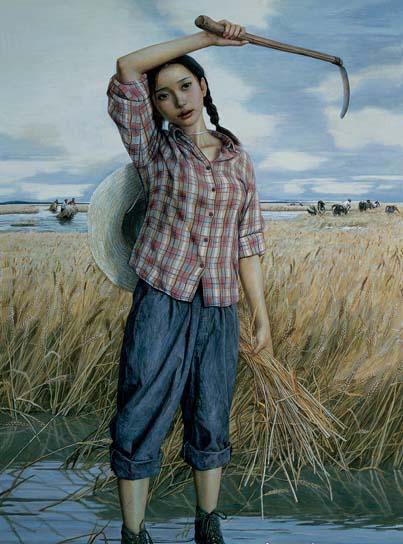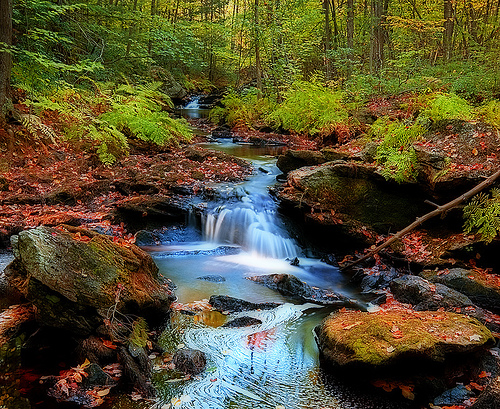About the Poet – Henry Wadsworth Longfellow was one of the five Fireside poets, whose poems are very often included in anthologies. His best known work is The Song of Hiawatha.
Longfellow was born in Portland, Maine (which was then a part of Massachusetts) on 27th February, 1807. He studied at Bowdoin College. After spending time in Europe he became a professor at Bowdoin and, later, at Harvard College. His first major poetry collections were Voices of the Night (1839) and Ballads and Other Poems (1841).
Longfellow retired from teaching in 1854, to focus on his writing, living the remainder of his life in Cambridge, Massachusetts, in a former headquarters of George Washington. His first wife Mary Potter died in 1835, after a miscarriage. His second wife Frances Appleton died in 1861, after sustaining burns when her dress caught fire. After her death, Longfellow had difficulty writing poetry for a time and focused on his translation. He was also the first American to translate Dante Alighieri’s The Divine Comedy. He died on 24th March, 1882.
About the Poem
‘Sunrise on the Hills’ is part of Longfellow’s first collection of poetry known as Voices of the Night which was published in the year 1839. Like most of his poetry, this poem also abounds in natural descriptions. It is a light read, meant to entertain families as they sit around the fire on a quiet night. Longfellow wrote for the masses, and this poem is no exception to that rule.
Setting of the Poem
In ‘Sunrise on the Hills’, the poet sees himself at the summit of a mountain, looking down as the clouds and the sun battle with each other for prominence. As he watches all this, he can also see water flowing beneath him. He realizes that he is far away from the hustle and bustle of all human habitation. He thinks that if any of his readers are ever melancholy, they should arrive at a similar setting in the hills to gain a little perspective on their situation.
Annotation Stanza-wise
Please note: N= noun, V=verb, Adj=Adjective, Adv=Adverb, P=preposition, Pr=Pronoun
1st stanza:
Arch (N): A curved symmetrical structure spanning an opening and typically supporting the weight of a bridge, roof, or wall above it
Glorious (Adj): Having a striking beauty or splendour
Gales (N): Very strong winds
Vales (N): Valleys (used in place names or as a poetic term)
Hosts (N): Armies
Pinnacle (N): A high, pointed piece of rock
Lance (N): A long weapon with a wooden shaft and a pointed steel head, formerly used by a horseman in charging
Rocking (V): Moving gently to and fro or from side to side
Cleft (Adj): Split, divided, or partially divided into two
Cascade (N): A small waterfall, typically one of several that falls in stages down a steep rocky slope
Mellow (Adj): (Especially of a sound, flavour, or colour) Pleasantly smooth or soft; free from harshness
Bittern (N): A large marsh bird of the heron family, which is typically smaller than a heron, with brown streaked plumage
2nd stanza:
Dash (V): Strike or fling (something) somewhere with great force, especially so as to have a destructive effect
Whirl (V): Move or cause to move rapidly round and round
Flash (V): Shine in a bright but brief, sudden, or intermittent way
Reach (N): A continuous extent of water, especially a stretch of river between two bends, or the part of a canal between locks
O’er (P): Short form of “over”, typically used in poetry to maintain the rhyme scheme chosen by that particular poet
Swell (N): A gradual increase in amount, intensity, or volume
Glen (N): A narrow valley, especially in Scotland or Ireland
Dingle (N): A deep wooded valley or dell
3rd stanza:
Thou (Pr): An older form of the word “you”
Art (V): An older form of the word “are”
Worn (Adj): Very tired
Beset (Adj): (Of a problem or difficulty) trouble (someone or something) persistently
Wouldst (V): An older form of the word “would”
Thy (Pr): An older form of the word “your”
Dim (V): Make or become less bright or distinct
Some online learning platforms provide certifications, while others are designed to simply grow your skills in your personal and professional life. Including Masterclass and Coursera, here are our recommendations for the best online learning platforms you can sign up for today.
The 7 Best Online Learning Platforms of 2022
- Best Overall: Coursera
- Best for Niche Topics: Udemy
- Best for Creative Fields: Skillshare
- Best for Celebrity Lessons: MasterClass
- Best for STEM: EdX
- Best for Career Building: Udacity
- Best for Data Learning: Pluralsight
















